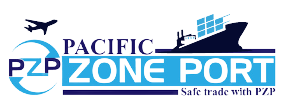
Jo Jo
Shipping tips & tricks for a smoother delivery.
East Meets Midwest: Ship from China to Chicago and Bridge the Gap - Complete Guide 2024
In an increasingly interconnected world, the movement of goods from one part of the globe to another has become a cornerstone of international trade. Ship from China to Chicago is a vital artery in this global network, connecting the manufacturing prowess of the East with the commercial dynamism of the Midwest. This guide delves into the multifaceted process of ship from China to Chicago, offering a comprehensive overview for businesses and individuals looking to navigate this transcontinental journey in 2024.


The Significance of the Ship from China to Chicago Trade Corridor
The trade relationship between China and the United States has long been a defining feature of global commerce. As the largest economy in the Midwest, Chicago serves as a critical hub for the distribution of goods across North America. The city’s strategic location, coupled with its extensive infrastructure, makes it an ideal gateway for products that ship from China to Chicago.
Key Considerations in Ship from China to Chicago
Understanding Incoterms
Incoterms (International Commercial Terms) are fundamental to international shipping, outlining the responsibilities of buyers and sellers in global transactions. Familiarizing oneself with terms like FOB (Free on Board), CIF (Cost, Insurance, and Freight), and DDP (Delivered Duty Paid) can mitigate misunderstandings and streamline the shipping process.
Selecting the Right Shipping Method
There are two primary modes of transporting goods and ship from China to Chicago: ocean freight and air freight. Each method has its advantages and drawbacks, contingent on the nature of the goods, urgency, and budget.
Ocean Freight
Ocean freight is the preferred option for bulky, non-perishable goods due to its cost-effectiveness. Shipping containers are the backbone of this mode, and understanding container specifications (e.g., TEU – Twenty-foot Equivalent Unit) is essential.
Full Container Load (FCL) and Less than Container Load (LCL) are the two main categories. FCL is suitable for larger shipments, providing exclusive use of a container, while LCL is ideal for smaller shipments, where goods share container space with other consignments.
Air Freight
For time-sensitive and high-value goods, air freight offers unparalleled speed. Despite its higher cost, the efficiency and security of air transport make it a viable option for electronics, pharmaceuticals, and fashion items. Understanding chargeable weight (a combination of weight and volume) is crucial for budgeting.
Customs and Regulatory Compliance
Navigating the labyrinthine world of customs regulations is pivotal for seamless shipping. Ensuring that all necessary documentation, such as commercial invoices, packing lists, and certificates of origin, is meticulously prepared can prevent costly delays.
HS Codes (Harmonized System Codes) are used to classify goods and determine tariffs. Accurate classification is imperative to avoid fines and ensure compliance with both Chinese and U.S. customs.
The Journey: Ship From China to Chicago
Departure from China
Major port cities like Shanghai, Shenzhen, and Guangzhou are the primary points of origin for goods bound for Chicago. These ports are equipped with state-of-the-art facilities to handle vast volumes of cargo, ensuring efficient loading and departure.
Transpacific Crossing
The journey across the Pacific Ocean typically takes about two to three weeks by sea, depending on the route and weather conditions. During this phase, tracking shipments through GPS technology and regular updates from freight forwarders provide peace of mind.
Arrival in the United States
Upon reaching the U.S. West Coast, goods are typically offloaded at major ports such as Los Angeles or Long Beach. From there, they are transported to Chicago via rail or truck. Intermodal transport, which utilizes multiple modes of transportation, is crucial for efficient inland distribution.
The Role of Freight Forwarders
Freight forwarders are invaluable allies in the shipping process, offering expertise in logistics, documentation, and regulatory compliance. Companies like DHL, Kuehne + Nagel, and Expeditors specialize in facilitating smooth transcontinental shipments.
Choosing a Reliable Freight Forwarder
Selecting a reputable freight forwarder involves assessing their track record, network capabilities, and range of services. A forwarder with a robust presence in both China and the U.S. can offer comprehensive support, from door-to-door delivery to customs brokerage.
Costs Involved in Shipping
Shipping Rates
Understanding the factors that influence shipping rates is essential for budgeting. These include the type of freight (FCL/LCL or air), weight, volume, and the nature of the goods.
Additional Charges
Beyond the basic shipping rates, additional charges such as fuel surcharges, port fees, customs duties, and insurance must be considered. Transparent communication with freight forwarders can help anticipate and manage these costs.
Insurance
Investing in cargo insurance provides a safety net against potential losses due to damage, theft, or other unforeseen circumstances. Understanding the coverage options and exclusions is crucial for selecting an appropriate policy.
Streamlining the Shipping Process
Technology and Automation
Advancements in technology are revolutionizing the shipping industry. Supply chain management software and blockchain technology enhance transparency and efficiency, reducing the risk of errors and delays.
Sustainable Shipping Practices
As environmental concerns mount, adopting sustainable shipping practices is increasingly important. Utilizing eco-friendly packaging, optimizing shipping routes, and partnering with carriers committed to reducing their carbon footprint contribute to a greener supply chain.
Case Study: Successful Shipping from China to Chicago
Consider a mid-sized electronics company based in Chicago that sources components from Shenzhen. By leveraging the services of a seasoned freight forwarder, the company navigates the complexities of customs regulations and selects the optimal shipping method. Using FCL ocean freight for bulk components and air freight for time-sensitive parts, they achieve a balanced approach that meets their logistical and financial objectives.
Future Trends in Shipping from China to Chicago
E-commerce and Omnichannel Distribution
The rise of e-commerce has amplified the demand for efficient shipping solutions. Businesses are increasingly adopting omnichannel distribution, integrating online and offline channels to enhance customer experiences and streamline fulfillment.
Innovations in Transportation
Emerging technologies such as autonomous ships and drones are poised to transform the shipping landscape. These innovations promise greater efficiency and reduced transit times, heralding a new era in global logistics.
Economic and Political Influences
The dynamic nature of international trade is influenced by economic policies and geopolitical developments. Staying abreast of trade agreements, tariffs, and regulatory changes is vital for businesses engaged in transpacific shipping.
Conclusion
Shipping from China to Chicago epitomizes the confluence of global trade, bridging the gap between East and Midwest. By understanding the intricacies of shipping methods, regulatory compliance, and cost management, businesses can harness this vital trade route to their advantage. As technological advancements and evolving market demands shape the future of logistics, staying informed and adaptable will be key to thriving in this dynamic landscape.
Navigating the complexities of shipping from China to Chicago requires a meticulous approach, but the rewards of efficient and effective logistics can significantly bolster business success. This guide provides the foundation needed to embark on this transcontinental journey with confidence, bridging the vast distances and cultural divides to bring products to market in a timely and cost-effective manner.



